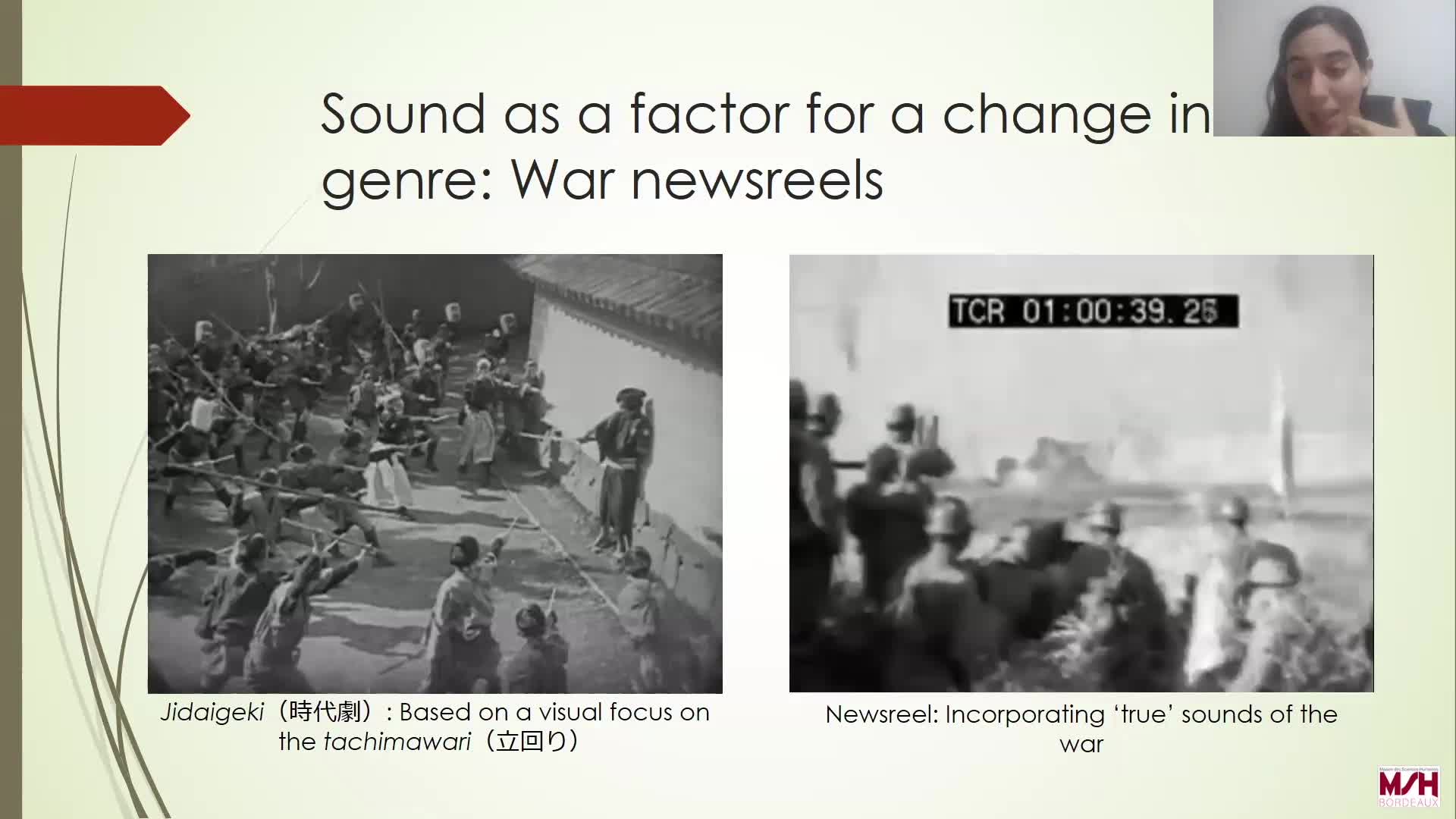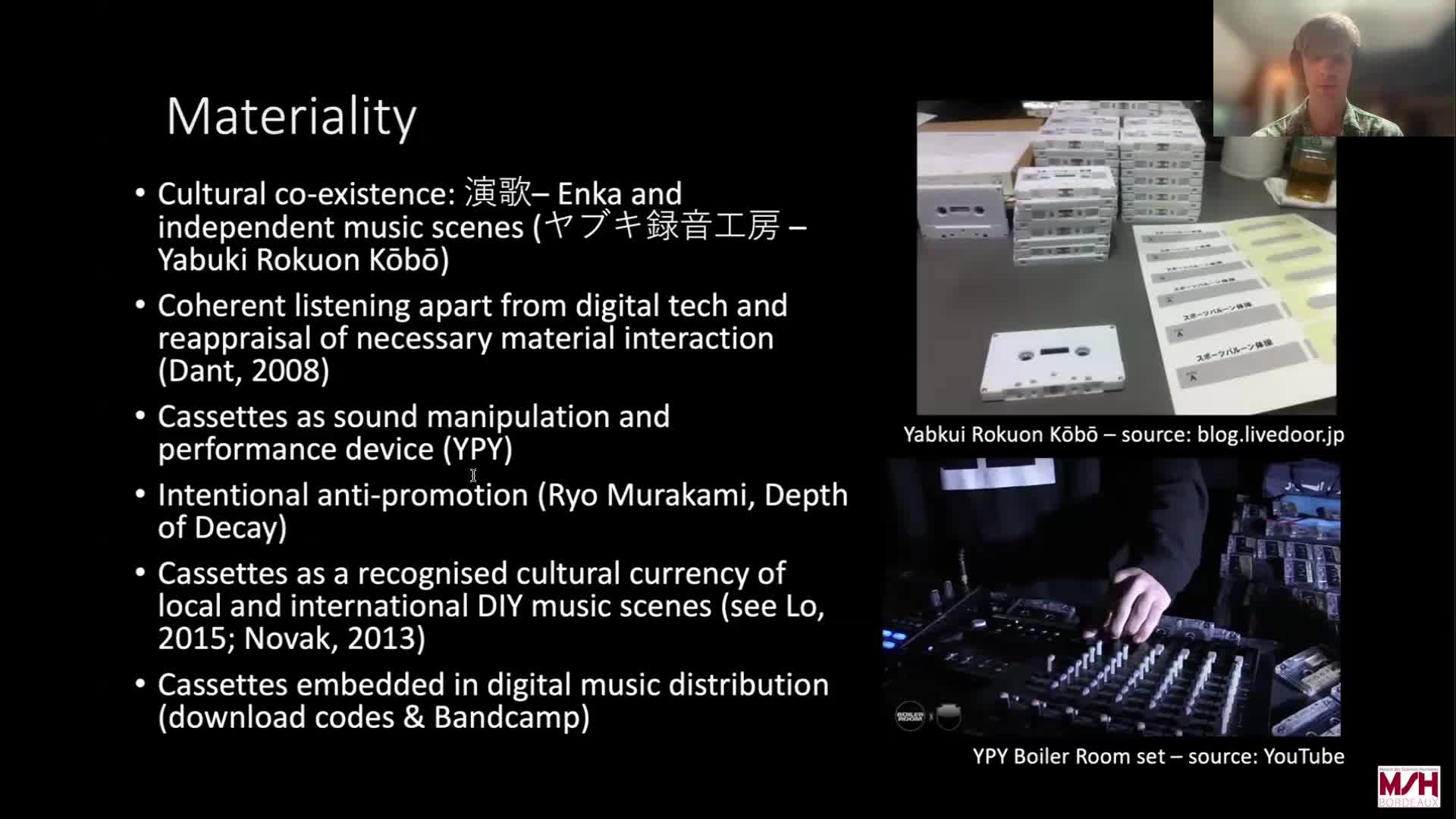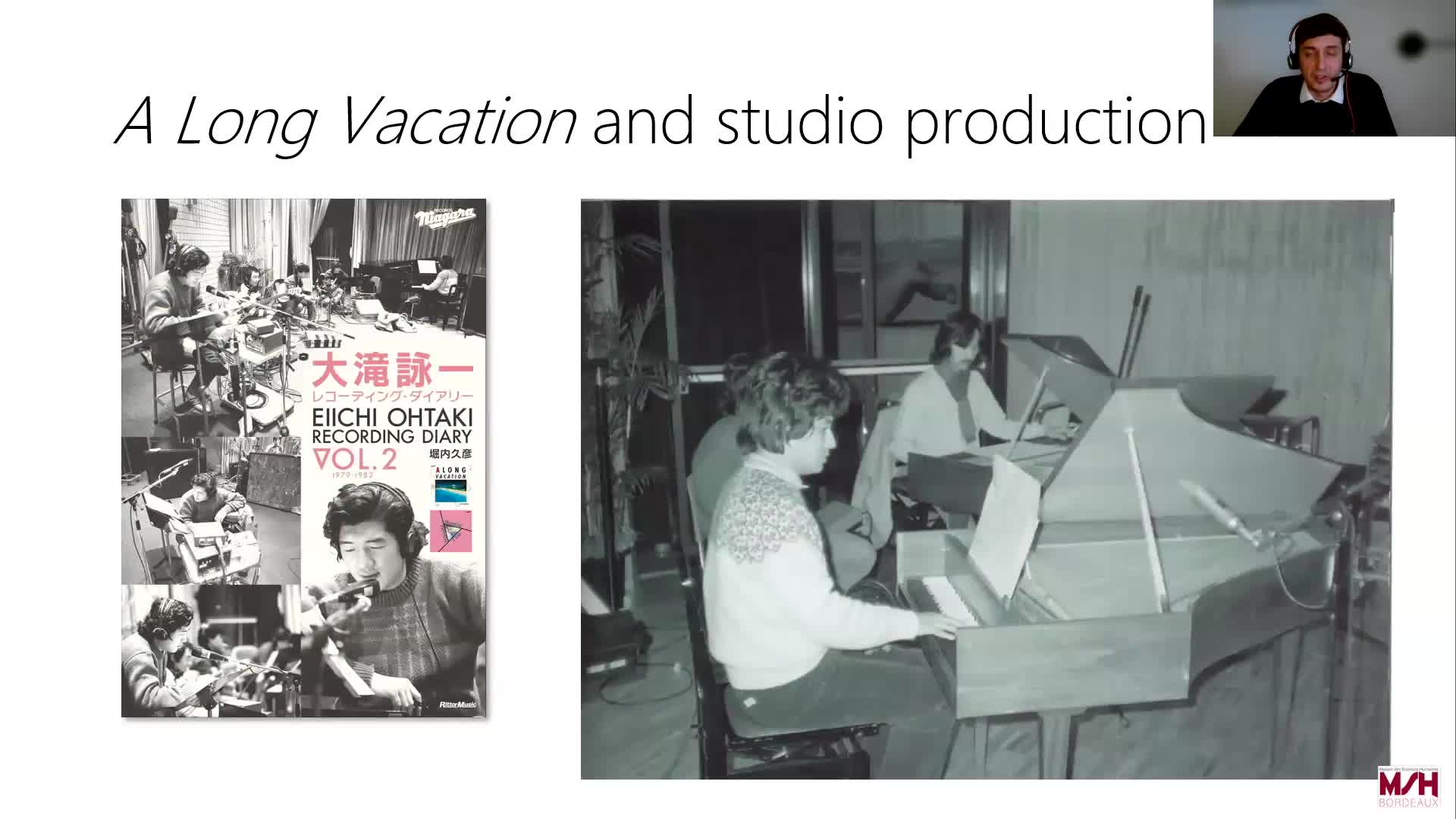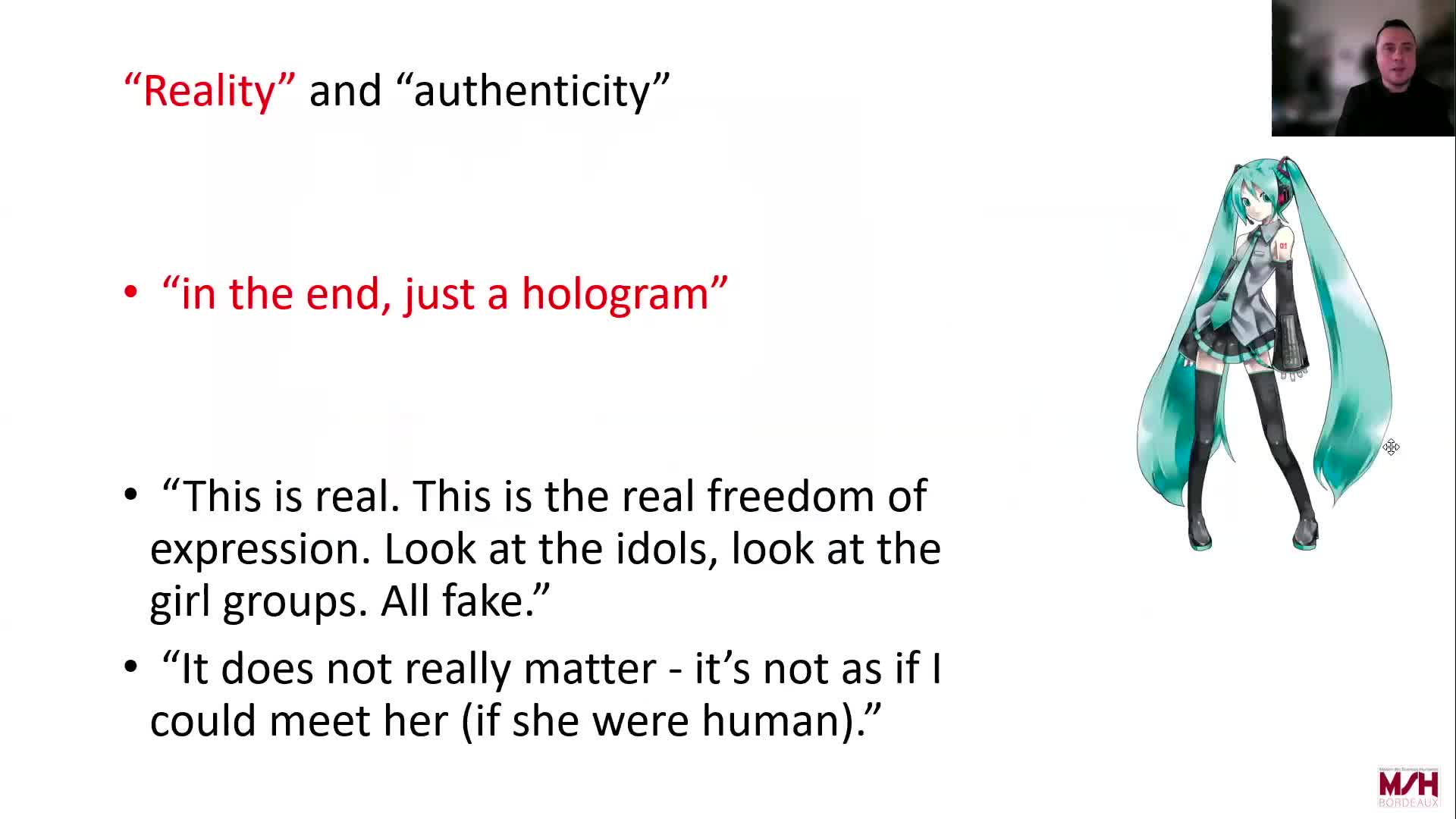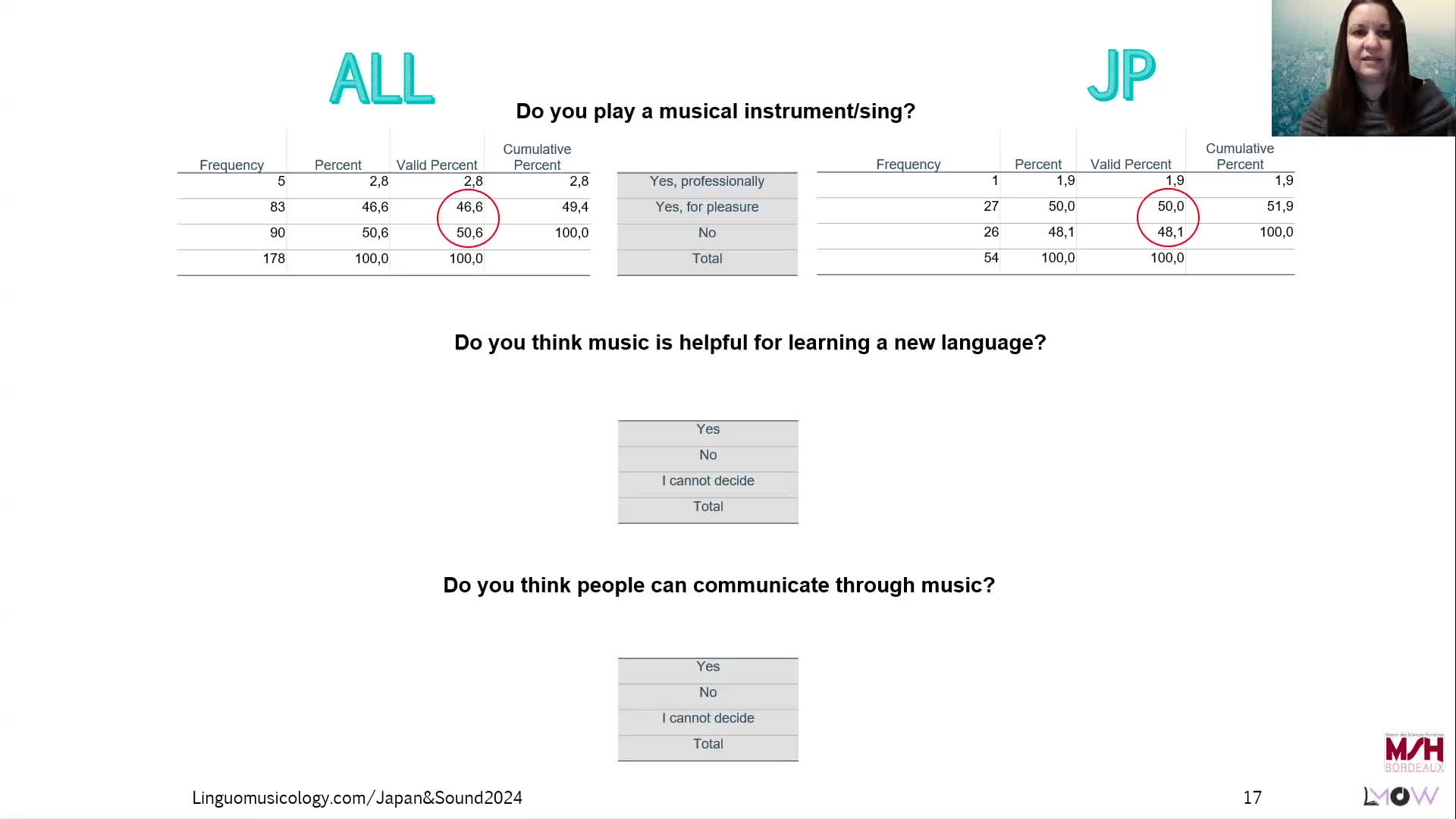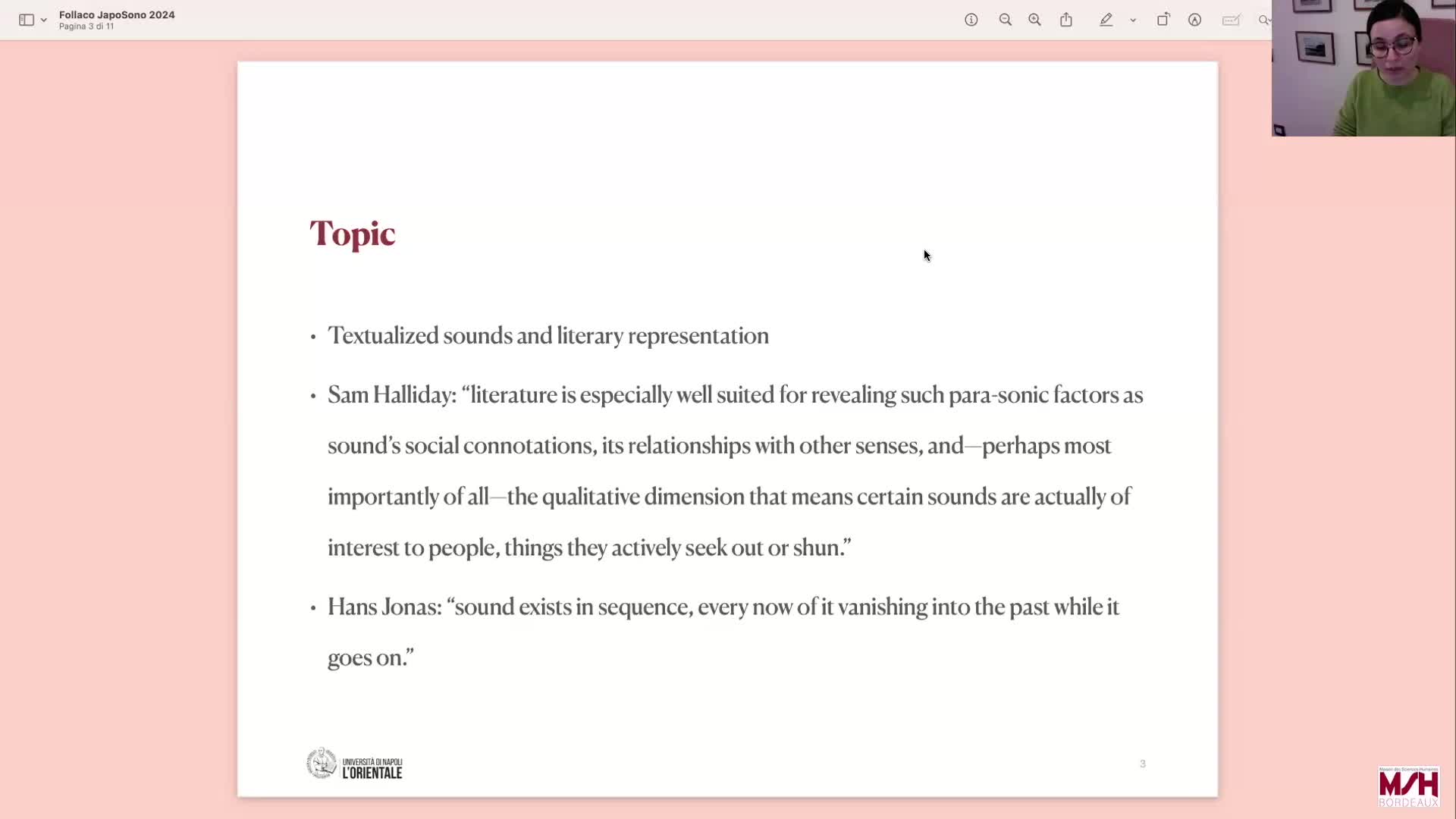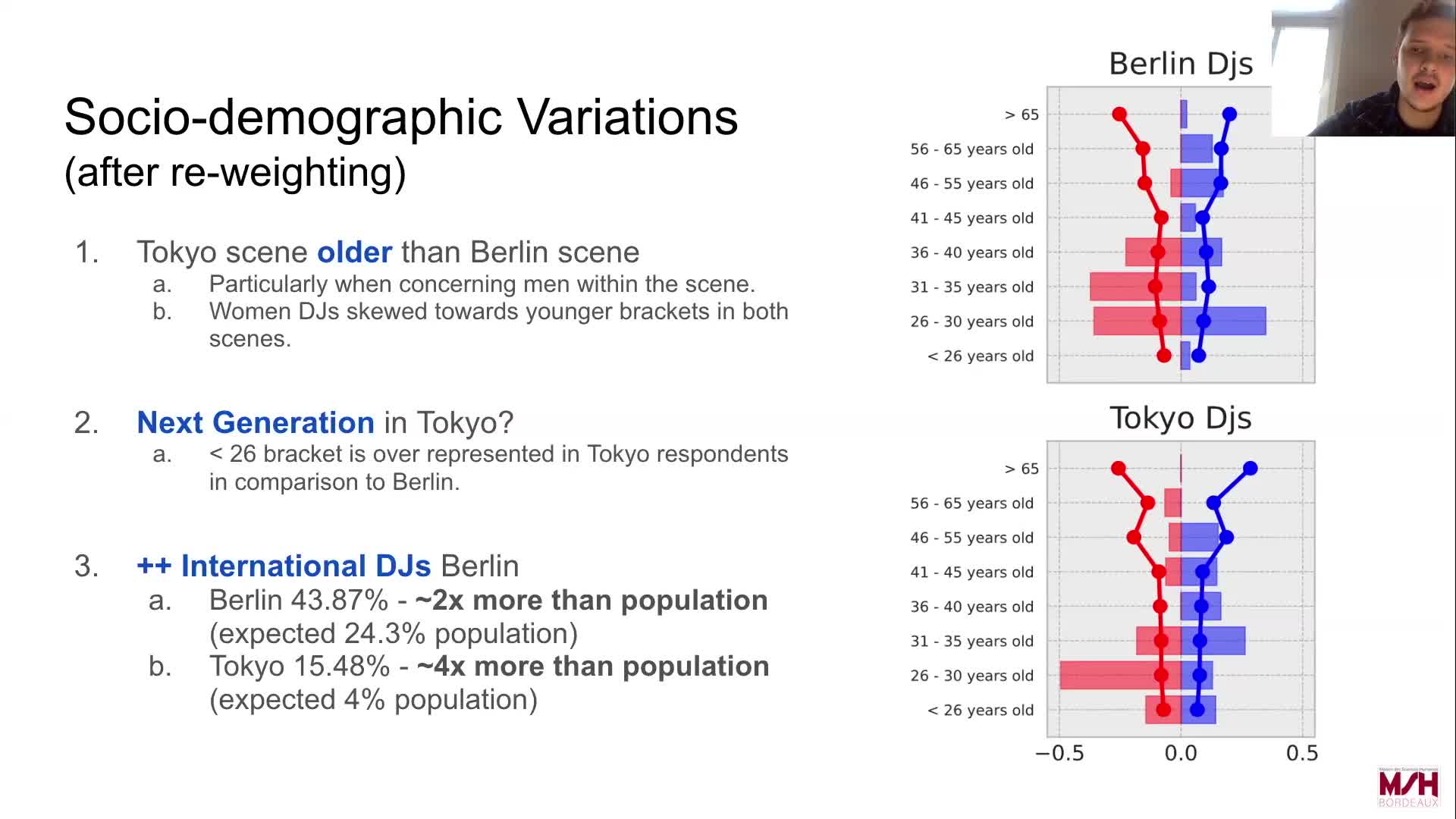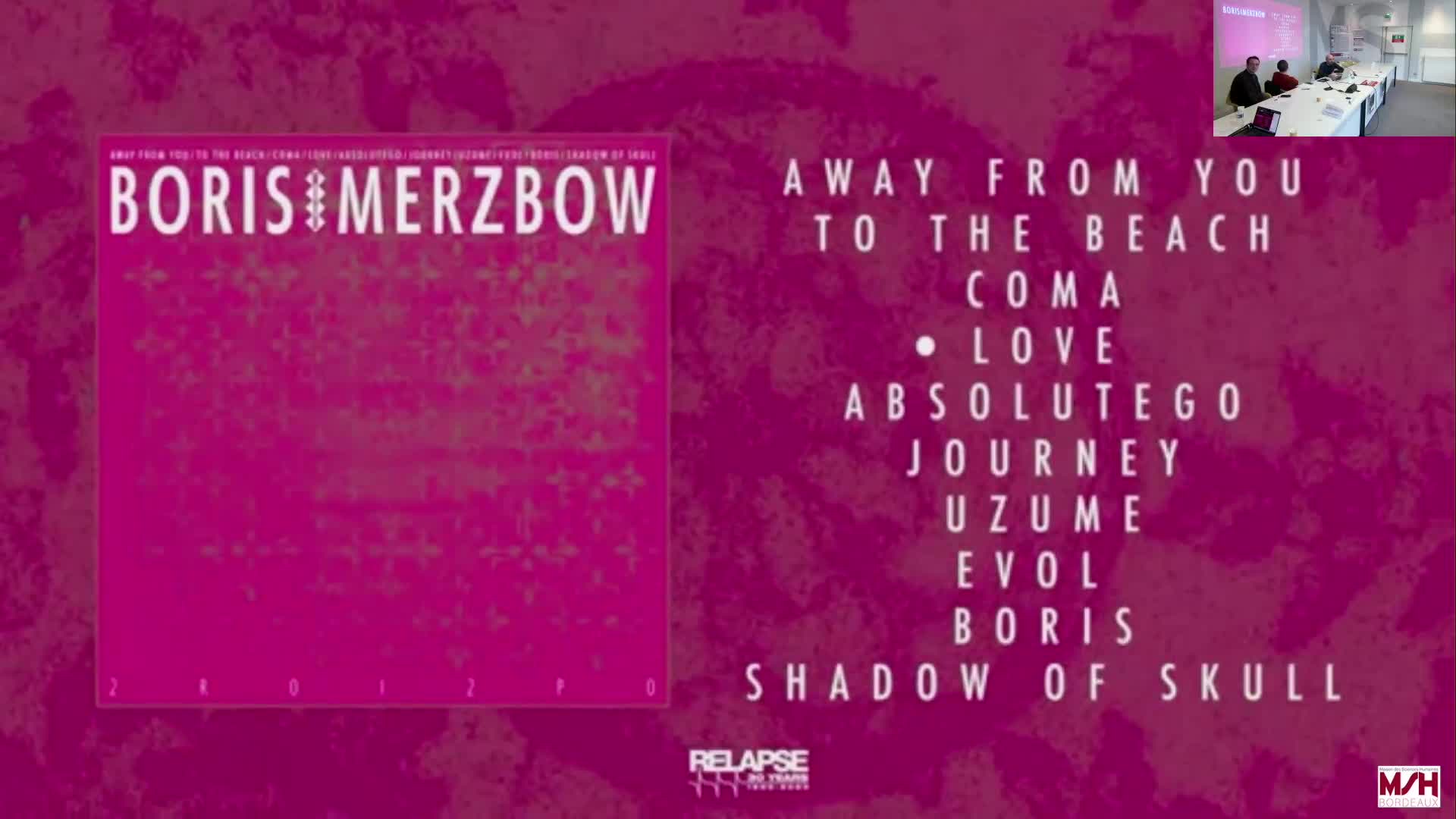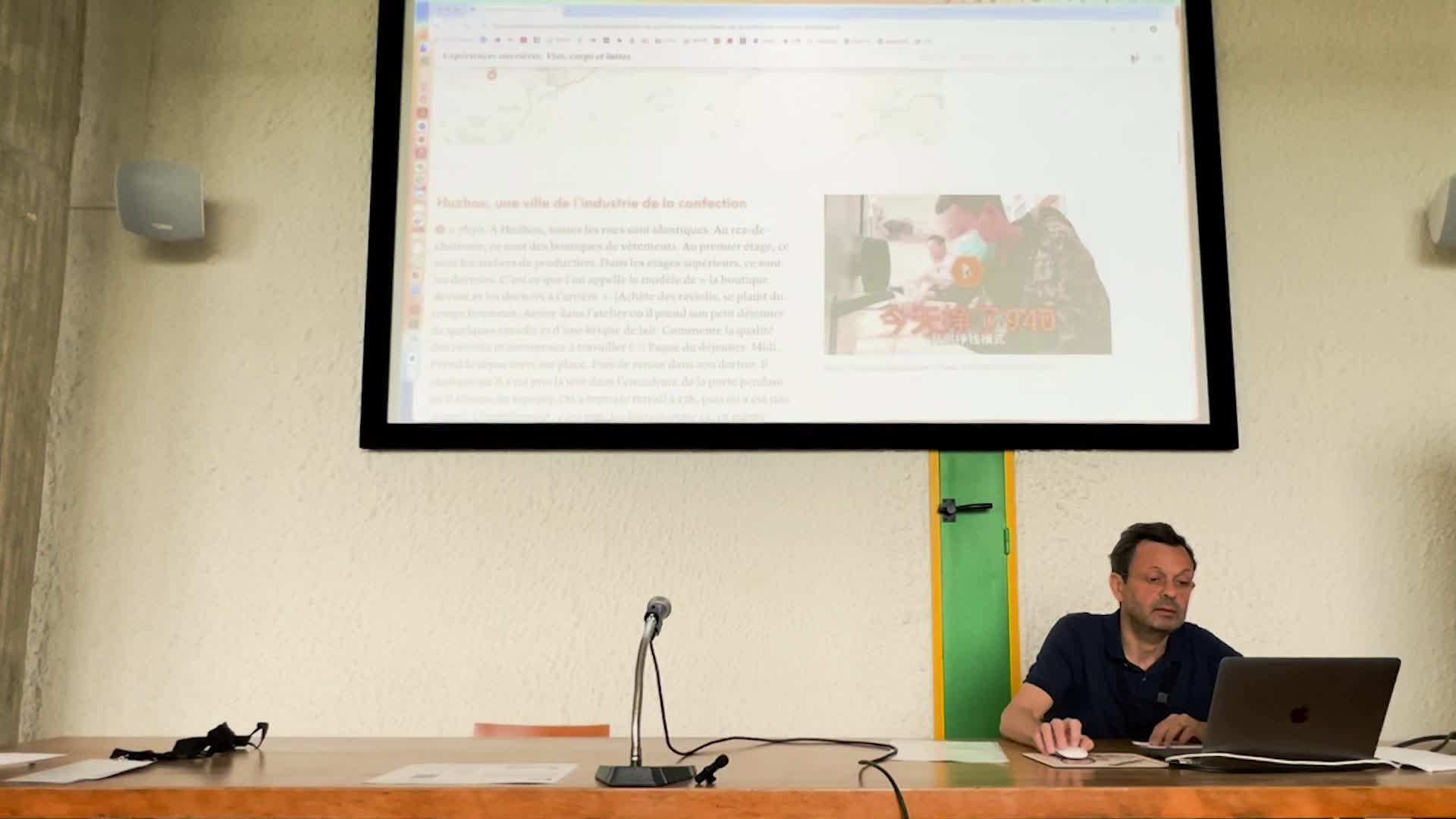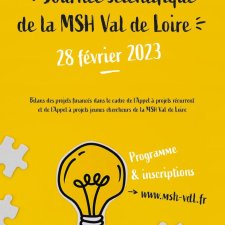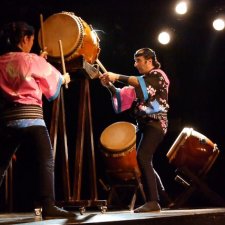Notice
Sound effects cinema: Mid-1930s Japanese films and the surprising synthesis of silent and sound techniques
- document 1 document 2 document 3
- niveau 1 niveau 2 niveau 3
Descriptif
Sean O'Reilly, "Sound effects cinema: Mid-1930s Japanese films and the surprising synthesis of silent and sound techniques".
Panel 3 : Représentations du média sonore / Representations of sound media
In late 1935, precisely halfway through the 1930s and Japan’s lengthy transition to sound cinema, a curious musical comedy-style period drama, Enoken Plays Kondō Isami (Enoken no Kondō Isami), was released. The vaudevillian-style comedy poked fun at famous nineteenth century patriots, depicting them as buffoons for comic effect. But the comedy was not only visual in nature; indeed, film studios’ first successes earlier in the 1930s with sync-sound “talkies” had already begun to condition moviegoers to expect much of the fun to enter through the ears rather than the eyes. The film makes frequent use of aural gags, so it may come as a surprise to notice that several of its most dramatic sequences were shot silently, with nondiegetic background music added later. Is this, then, a true talkie or does it still have one foot in the silent era? In this paper, I argue that this film’s bold—and tongue-in-cheek—blending of both silent and sound film techniques is its greatest strength. Its success shows that Japanese cinema’s range of possibilities was greater in 1935, in this hybrid stage, than at any other time before or since.
Colloque "Le Japon sonore : modernité, constructions sociales, rapports de force / Japan and sound: modernity, social constructs and power relations" 14-16 novembre 2024, organisé par Jeremy Corral (UMRU 24140 D2IA, Université Bordeaux Montaigne) et par Chiharu Chûjô (EA 4186-IETT, Université Jean Moulin Lyon 3).
More informations: https://mshbordeaux.hypotheses.org/10930
Thème
Dans la même collection
-
Clôture du colloque / Closing comments
CorralJeremyChujoChiharuColloque "Le Japon sonore : modernité, constructions sociales, rapports de force / Japan and sound: modernity, social constructs and power relations"
-
The ear is a weapon: Soundscapes of racial violence in Tokyo, 1923
Colloque "Le Japon sonore : modernité, constructions sociales, rapports de force / Japan and sound: modernity, social constructs and power relations"
-
Recorded sound and the development of ideological control: Changes in Japanese cinema since 1931
Colloque "Le Japon sonore : modernité, constructions sociales, rapports de force / Japan and sound: modernity, social constructs and power relations"
-
Tomorrow on cassette: Japan’s tape jams in the new media age
Colloque "Le Japon sonore : modernité, constructions sociales, rapports de force / Japan and sound: modernity, social constructs and power relations"
-
Re-sounding Shōwa: Ōtaki Eiichi’s A Long Vacation and nostalgia for 1980s Japan
Colloque "Le Japon sonore : modernité, constructions sociales, rapports de force / Japan and sound: modernity, social constructs and power relations"
-
Masculinities and femininities of Japanese singer-songwriters
Colloque "Le Japon sonore : modernité, constructions sociales, rapports de force / Japan and sound: modernity, social constructs and power relations"
-
Multivocality and the vocaloid fan canon
Colloque "Le Japon sonore : modernité, constructions sociales, rapports de force / Japan and sound: modernity, social constructs and power relations"
-
The music of words of Japan: The relationship between human language and music
Colloque "Le Japon sonore : modernité, constructions sociales, rapports de force / Japan and sound: modernity, social constructs and power relations"
-
"Did anyone hear what I said?": Acting through sound in Higuchi Ichiyō’s writing
Colloque "Le Japon sonore : modernité, constructions sociales, rapports de force / Japan and sound: modernity, social constructs and power relations"
-
Gyaru and hip-hop: Shaping a sound-based identity
Colloque "Le Japon sonore : modernité, constructions sociales, rapports de force / Japan and sound: modernity, social constructs and power relations"
-
La musique électronique à Tokyo : une scène (définitivement) analogique ?
PoirouxJérémieColloque "Le Japon sonore : modernité, constructions sociales, rapports de force / Japan and sound: modernity, social constructs and power relations"
-
Save the noise: Supportive acts and works in Japanese noise music in the COVID-19 pandemic
Colloque "Le Japon sonore : modernité, constructions sociales, rapports de force / Japan and sound: modernity, social constructs and power relations"
Sur le même thème
-
La valorisation numérique d’un corpus multilingue dans le cadre de l’ANR Eurasemploi
GuiheuxGillesPrésentation du projet par Gilles Guiheux, l'un des responsables scientifiques.
-
Translatio. Réception de l'Antiquité classique dans le japon contemporain
CaltotPierre-AlainHenningerAlineLe programme de recherches Translatio vise à s’intéresser à la réception et à la présence de l’Antiquité classique, en l’occurrence Antiquité grecque et romaine, dans le Japon moderne et contemporain,
-
-
L'Après impossible : destruction et reconstruction dans les imaginaires médiatiques japonais
JavetDavidDavid Javet, spécialiste des imaginaires japonais, interroge nos compétences à concevoir des utopies, des « Mondes d’après » véritablement alternatifs.
-
La nature dans la ville japonaise. Un carnet de voyage… Cycle : Rencontres autour du livre 2012-2013
CavaillezAleksiBrosseauSylvieRencontres autour du livre 2012-2013 : Les acteurs des métiers du livre (écrivains, éditeurs, illustrateurs…) dévoilent leurs savoir et savoir-faire.
-
Fukushima ou l'administration du désastre. Pouvoirs publics et médias face au nucléaire
BrunoTinoRibaultThierryIwataWataruL’épuisement d’un système, l’existence d’une volonté
-
introduction, dans le cadre du forum "nos vies microbiennes : un forum contre l'éradication"
LahlouSaadiForum organisé par Victoria Lee, chercheuse-résidente 2020-2021 de l'IEA de Paris, avec le soutien de l'Institut d'études avancées de Paris.
-
Taiko : de l'art du tambour
CharriéAlizéeConanLénaMillienWillieBonaventuraClaudiaLe Taiko nous vient du Japon : il signifie littéralement “le plus grand tambour”. Plus qu’un instrument de musique, c’est un véritable art où les performances témoignent du dynamisme et de l’énergie




